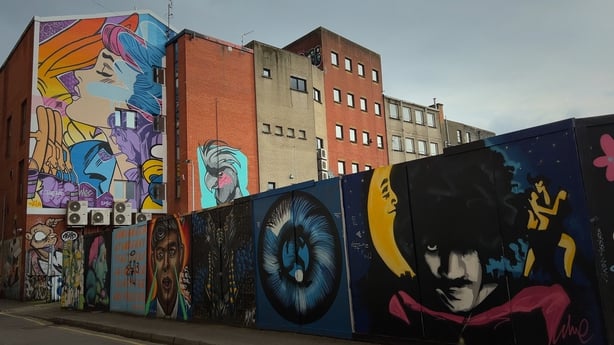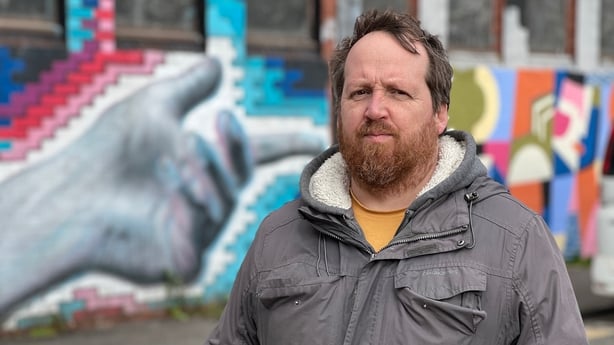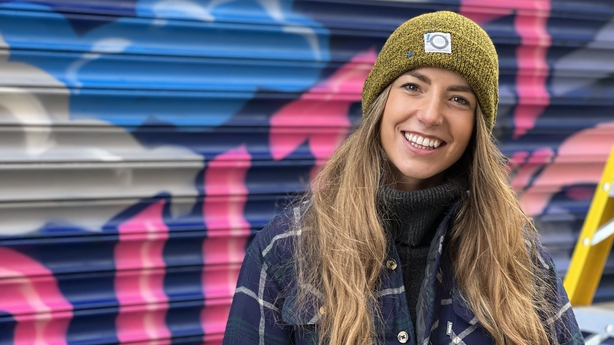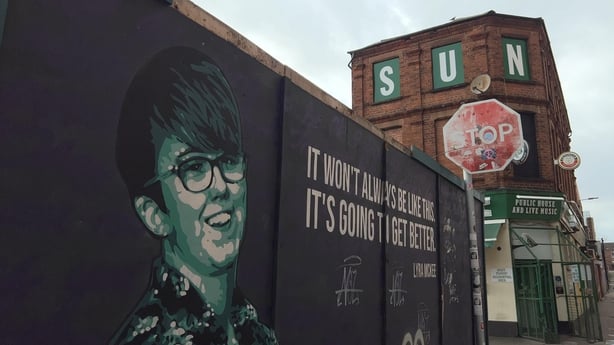Northern Ireland has a rich history of murals detailing decades of conflict and division.
But in recent years, there has been a growth in street art - featuring themes, styles and techniques which are in sharp contrast to the political works of the past.

The streets in Belfast's Cathedral Quarter are an ever-evolving canvas, as artists leave their mark on the city.
This is where the biggest street art festival in the UK and Ireland, 'Hit the North', will take place later this month.

Organiser Adam Turkington from Seedhead Arts takes me to Kent Street, where he explains how street art is helping to forge a new narrative for the city.
"I always use the expression 'we speak wall' here, because that's the language we've used to have our conflict for generations. But if you are not aligned to either one of those traditions and somebody puts something on the wall that's not aligned to one of those traditions, it connects with you in a much deeper way than it would nearly anywhere else. Because you're like - 'this is a mural that's for me. It connects me with this space and place.'
"There is an unrepresented majority here who don't feel that the country we belong to is the most important thing for their quality of life. They don't care more about a flag than the health service. That's not a post Good Friday Agreement thing either. That was the case all the way through the Troubles. But it has grown since the Good Friday Agreement."

Artist Kerrie Hanna is a Belfast native who leads street art tours in the city.
"Street art is popping up everywhere around Belfast, giving the city a new identity," she explains.
"Walls are generally quite contentious here because of our 100-year heritage of political murals. But over the last 10 to 15 years, we've really seen a rise in the number of artists wanting to comment on things beyond the binary 'us and them' situation. Some pieces might advocate for things like women's rights, or they might just be beautiful pictures, brightening up the city."

Alana McDowell is from Larne, but is currently living in Barcelona.
Like Kerrie, she will join more than 60 local and international artists at 'Hit the North'.
"When people think of street art and they think of Northern Ireland, they don't think of what we are doing here. The scene is incredibly diverse. It's no longer considered just vandalism, or fuelled by something sectarian. It comes from a place that's much more creative and purer.
"This isn't the city of the Troubles. It's not even the same city that it was 5-10 years ago. It's continually evolving."

'Hit the North' is now in its tenth year and will culminate in a 'paint jam' on Kent Street on 30 April.
Adam Turkington says the festival's influence and impact continues to grow, bringing Northern Ireland's rich heritage for mural art into the 21st century.
"Northern Ireland has a really rich tradition of anti-establishment art because the establishment is so rubbish. The funding for art in Northern Ireland is the worst in Europe. We run our festival without any public money.
"Artists in Belfast and in Northern Ireland have found ways to establish those outsider, counter-culture narratives because they are more important here. It means more here because there is a huge swathe of people here who are completely unrepresented by the political establishment. So, how do they find a connection or a sense of pride?
"I'm a proud Belfastian, more than anything else and my identity is framed by what I'm proud of in this city. Street art is one way that the city is responding to that conundrum of how you build community, when the tradition is to do something entirely different, to go by two identities which you don't necessarily connect to.
"I think that's what makes Belfast interesting, exciting and edgy. It has got this real edge to it that's not like anywhere else I know."






